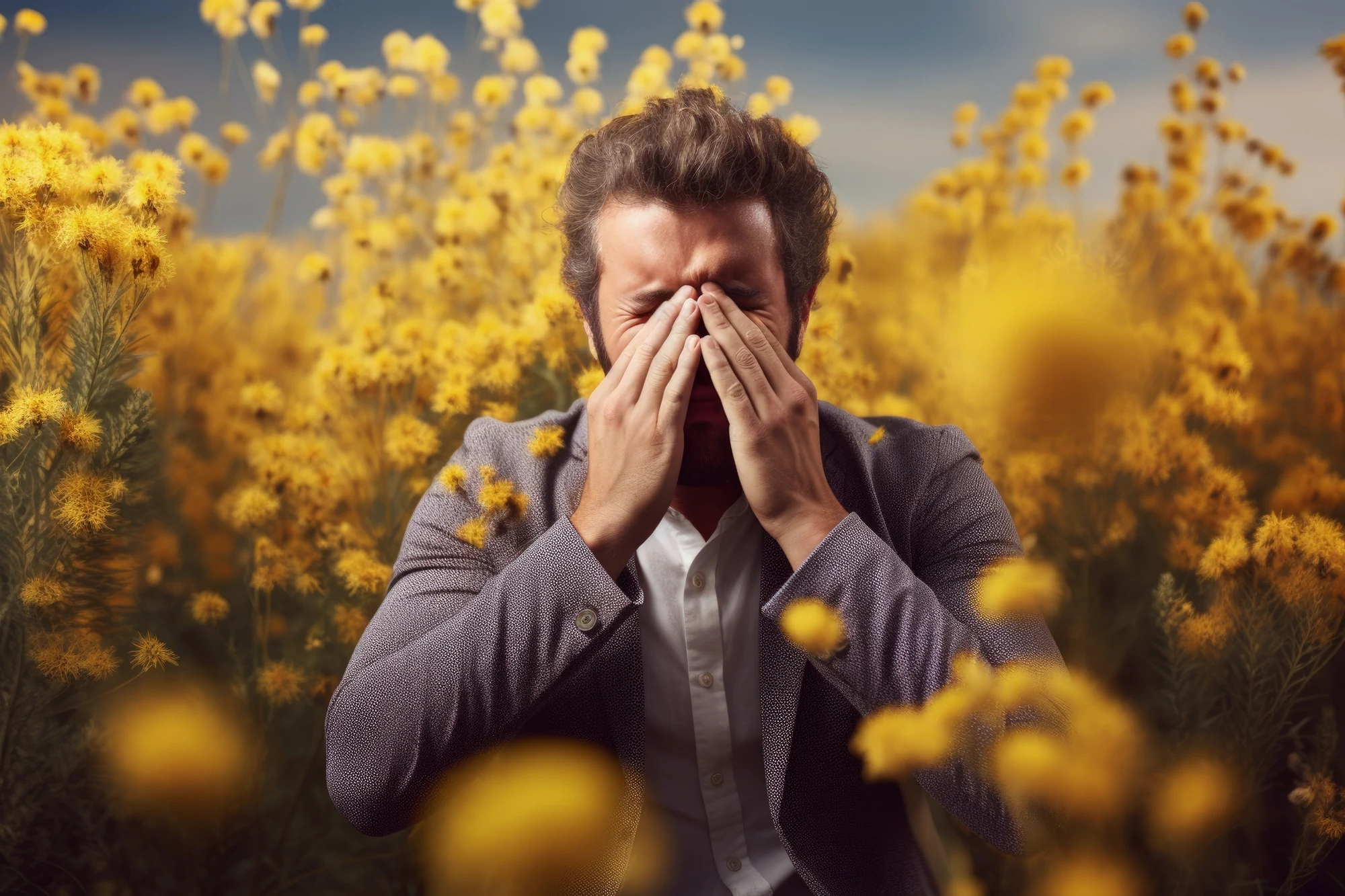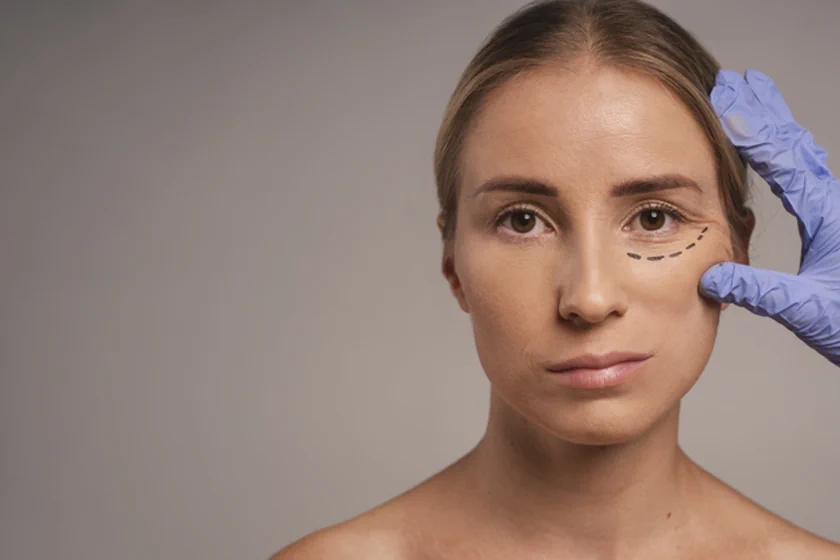|
Getting your Trinity Audio player ready...
|
Introduction to Seasonal Allergies
As spring brings its warmth and beauty to the Indian subcontinent, it also brings along a less welcome guest: seasonal allergies. Interestingly, India is home to a diverse array of allergenic plants, making it one of the global hotspots for allergic diseases.
Amidst the blooming flowers and rejuvenated landscapes, many Indians find themselves grappling with sneezing, congestion, and bothersome eye discomfort.
In this blog, we’ll delve into the nuances of seasonal allergies in India, exploring their prevalence, triggers, symptoms, and practical management strategies tailored to the unique challenges faced by individuals in the region.
Throughout, we’ll also touch upon allergy prevention tips, eye allergy solutions, and natural remedies for allergies.
Overview of Seasonal Allergy Prevalence
Seasonal allergies are a prevalent issue across the Indian subcontinent, affecting millions of individuals each year. As the country transitions from winter to spring, the proliferation of allergenic plants and increased pollen counts contribute to a surge in allergic reactions.
In urban areas, factors such as pollution and environmental changes further exacerbate the prevalence of seasonal allergies. From bustling cities to rural landscapes, people from all walks of life find themselves grappling with managing seasonal allergies like sneezing, congestion, and itchy eyes during the spring months.
Despite the widespread nature of seasonal allergies, many individuals remain unaware of the triggers and management strategies available to alleviate their symptoms.
Common Spring Allergy Symptoms
Common spring allergy symptoms encompass a range of discomforts that can significantly impact daily life.
Sneezing frequently occurs as the body’s natural response to allergens like pollen, which irritate the nasal passages. A runny or stuffy nose is often present, accompanied by congestion and difficulty breathing through the nasal passages. Itchy or watery eyes are hallmark symptoms of allergic conjunctivitis, where allergens come into contact with the eyes, triggering inflammation and discomfort.
Additionally, individuals may experience a scratchy throat or cough due to postnasal drip, where mucus accumulates at the back of the throat. The overall sensation of fatigue or lethargy may also accompany these symptoms, as the body expends energy to combat the allergens.
Triggers of Seasonal Allergies
Triggers of seasonal allergies primarily revolve around environmental factors, particularly the presence of allergens in the air. During spring, common triggers include:
Pollen: Pollen from trees, grasses, and weeds is a major culprit behind seasonal allergies. As plants begin to bloom and release pollen into the air, individuals sensitive to these allergens may experience allergic reactions, including eye allergy symptoms such as itching, redness, and watery eyes.
Mold: Mold spores thrive in damp and humid environments, such as in soil, decaying vegetation, and indoor spaces like basements and bathrooms. Exposure to mold spores can exacerbate allergy symptoms, including eye discomfort.
Dust mites: Dust mites are microscopic organisms found in household dust, bedding, and upholstery. While they are present year-round, their levels may increase in the spring due to factors like increased humidity, leading to heightened allergy symptoms, including those affecting the eyes.
Pet dander: Pets shed dander, tiny flecks of skin, hair, or feathers, which can trigger allergic reactions in susceptible individuals. As pets spend more time outdoors during spring, exposure to pet dander may increase for allergy sufferers, potentially exacerbating eye allergy symptoms.
Impact on the Respiratory System and Eyes
Seasonal allergies not only wreak havoc on the respiratory system but also take a toll on the eyes, causing inflammation, redness, itching, and excessive tearing. This ocular discomfort can significantly impact daily activities and quality of life for allergy sufferers.
Eye Reactions to Allergens
When allergens come into contact with the eyes, the immune system mounts a defensive response, leading to a cascade of symptoms such as:
- Itching
- Redness
- Watery eyes
- Swelling of the eyelids
- Sensitivity to light
Relief Strategies For Managing Seasonal Allergies
Relief strategies for allergy symptoms aim to alleviate discomfort and improve the quality of life for individuals affected by seasonal allergies. Some effective strategies include:
1. Hydration: Staying hydrated helps thin mucus secretions, making it easier to expel allergens from the body. Drinking plenty of water throughout the day can help alleviate nasal congestion and soothe irritated throat tissues.
2. Nasal irrigation: Using a saline nasal rinse or neti pot can help flush out allergens and irritants from the nasal passages, providing relief from congestion and sinus pressure.
3. Allergy medications: Prescription antihistamines, decongestants, and nasal corticosteroids can help alleviate allergy symptoms such as sneezing, itching, congestion, and runny nose. it’s essential to consult a healthcare professional before starting any medication regimen, especially if you have pre-existing medical conditions or are taking other medications.
4. Eye drops: Prescription eye drops specifically formulated for allergies can provide relief from eye allergy symptoms such as itching, redness, and watering. Visit an eye care specialist instead of self-prescription.
5. Air purifiers: Using a high-efficiency particulate air (HEPA) filter air purifier can help remove allergens such as pollen, dust mites, mold spores, and pet dander from the air, creating a cleaner indoor environment and reducing allergy symptoms.
6. Allergen avoidance: Minimizing exposure to known allergens, such as pollen, mold, dust mites, and pet dander, can help prevent allergy symptoms from occurring or worsening. Strategies include keeping windows closed during high pollen seasons, using allergen-proof mattresses and pillow covers, and regularly cleaning and vacuuming indoor spaces.
7. Natural remedies: Some individuals find relief from allergy symptoms using natural remedies such as essential oils, and acupuncture. While these approaches may offer relief for some people, it’s essential to consult with a healthcare professional before trying any new treatment, especially if you have underlying health conditions or are taking medications.
8. Sunglasses: Wearing good quality sunglasses when outdoors can help protect your eyes from allergens like pollen, reducing the likelihood of eye allergy symptoms such as itching and watering.
By implementing these relief strategies, individuals can better manage their allergy symptoms and enjoy the spring season with greater comfort and clarity.
Preventing Seasonal Allergies Through Allergy Eye Care
Preventing seasonal allergies involves taking proactive steps to minimize exposure to allergens and reduce the likelihood of developing allergy symptoms. Here are some effective strategies:
1. Monitor pollen counts: Keep track of local pollen counts, typically higher on warm, dry, and windy days. Limit outdoor activities during peak pollen times, usually in the early morning and late afternoon.
2. Keep windows closed: During high pollen seasons, keep windows and doors closed to prevent allergens from entering your home. Use air conditioning with a HEPA filter to circulate and filter indoor air.
3. Use allergen-proof bedding: Encase pillows, mattresses, and box springs in allergen-proof covers to protect against dust mites and pollen. Wash bedding in hot water weekly to kill dust mites.
4. Clean indoor spaces regularly: Vacuum carpets, rugs, and upholstered furniture frequently using a vacuum cleaner equipped with a HEPA filter. Dust surfaces with a damp cloth to trap allergens instead of spreading them into the air.
5. Remove indoor plants: Indoor plants can harbor mold spores, contributing to indoor allergen exposure. Consider removing indoor plants or limiting their number, especially in areas prone to moisture.
6. Practice good hygiene: Shower and change clothes after spending time outdoors, particularly on high pollen days. This helps remove allergens from your skin and hair, preventing them from being transferred to indoor spaces.
7. Use nasal irrigation: Regularly rinse your nasal passages with a saline solution to flush out allergens and reduce nasal congestion. Nasal irrigation can help alleviate allergy symptoms and improve nasal airflow.
8. Limit exposure to indoor allergens: Reduce exposure to indoor allergens like dust mites, pet dander, and mold by keeping indoor spaces clean and well-ventilated. Use a dehumidifier to control indoor humidity levels and prevent mold growth.
9. Consult an allergist: If you frequently experience seasonal allergies despite preventive measures, consider consulting an allergist for allergy testing and personalized treatment options such as allergen immunotherapy (allergy shots) or sublingual immunotherapy (allergy drops).
FAQs About Allergy Eye Care
What are seasonal eye allergies, and what causes them?
Seasonal eye allergies, also known as allergic conjunctivitis, occur when the eyes react to allergens such as pollen, mold spores, or pet dander. When these allergens come into contact with the eyes, the immune system releases histamines, leading to inflammation and allergy symptoms.
What are the common symptoms of seasonal eye allergies?
Common symptoms of seasonal eye allergies include itching, redness, watering or tearing, swelling, and a gritty or burning sensation in the eyes. These symptoms can vary in severity and may occur alongside other allergy symptoms like sneezing and nasal congestion.
How can I differentiate between seasonal eye allergies and other eye conditions?
Seasonal eye allergies often present with specific symptoms such as itching and watering, which are less commonly seen in other eye conditions like dry eye or eye infections. Additionally, seasonal eye allergies tend to occur in response to allergen exposure during certain times of the year, such as spring or fall.
What are the most effective treatment options for seasonal eye allergies?
Treatment options for seasonal eye allergies include over-the-counter antihistamine eye drops, mast cell stabilizer eye drops, and oral antihistamines. Cold compresses and avoiding allergen exposure can also help alleviate symptoms. In severe cases, prescription medications or allergy shots may be recommended.
Can wearing contact lenses worsen seasonal eye allergies, and are there any tips for contact lens wearers?
Yes, wearing contact lenses can exacerbate seasonal eye allergies by trapping allergens against the surface of the eye. To minimize allergy symptoms while wearing contact lenses, consider using daily disposable lenses, cleaning lenses regularly, and avoiding wearing lenses during periods of high allergen exposure. Additionally, lubricating eye drops can help alleviate dryness and discomfort associated with contact lens wear during allergy season.
Conclusion
In conclusion, seasonal eye allergies can significantly impact one’s quality of life, causing discomfort and interfering with daily activities, especially during peak allergy seasons. Understanding the symptoms, triggers, and treatment options for seasonal eye allergies is crucial for effectively managing these allergic reactions and finding relief.
If you’re experiencing persistent or severe seasonal eye allergy symptoms, it’s essential to seek professional medical advice. Dr. Surbhi, our experienced eye care specialist, is dedicated to providing personalized care and effective treatment options tailored to your unique needs.
Don’t let seasonal eye allergies hold you back from enjoying life to the fullest. Contact Dr. Surbhi today to schedule a consultation and take the first step towards clearer, more comfortable eyesight.
![]()







